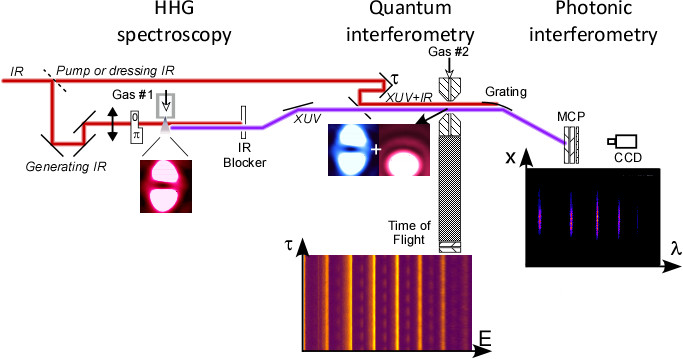
Equipment and methods: Introduction | Related research
Laser systems
We are carrying most of our research locally, on the SLIC laser systems . There are currently two Ti:Sapphire lasers on which we run attosecond beamlines: PLFA and LUCA. LUCA is a 20 Hz, 50 fs, 30 mJ laser, which mode is spatially filtered by a fiber (see Ge et al.)). PLFA is working at a repetition rate of 1 KHz, and delivers pulses of about 50 fs, 13 mJ. It may be coupled to a light conversion high energy topas, yielding a full tunability between 1200 nm and 1600 nm wavelength, finally yielding a continuously accordable XUV spectrum.
We will shortly move to the new Attolab facility where two Ti:Sapphire laser systems will be available working at 1kHz and 10 KHz repetition rate (resp. FAB1 and FAB10). They will deliver 20-25 fs long pulses with respectively 13 mJ and 2 mJ with a stabilized carrier envelope phase. The commissioning of the associated XUV beamlines is expected first semester 2016.


Attosecond beamlines
Our attosecond beamlines are constructed to offer the most complete diagnosis of the XUV emission. Our current setups, which are highly flexible usually look like the one depicted in the figure below. Basically, we intend to be able to measure a spectral amplitude and a spectral phase of the source using two-photon spectroscopy with the RABBIT technique (see XUV spectroscopy page) and a photon spectrometer positioned downstream. During Antoine Camper’s PhD thesis, we implemented an extra option by which we can perfom comparisons as for the phase of two adjacent HHG sources, one being possibly pumped (see Antoine Camper’s Thesis). The trick to get an excellent interferometric stability between the sources is to use a binary phase mask to create them.

Typical arrangement of our attosecond beamlines. This setup allows both spectral phase and amplitude measuremements at once. It also allows comparing two sources, one of them being pumped.

